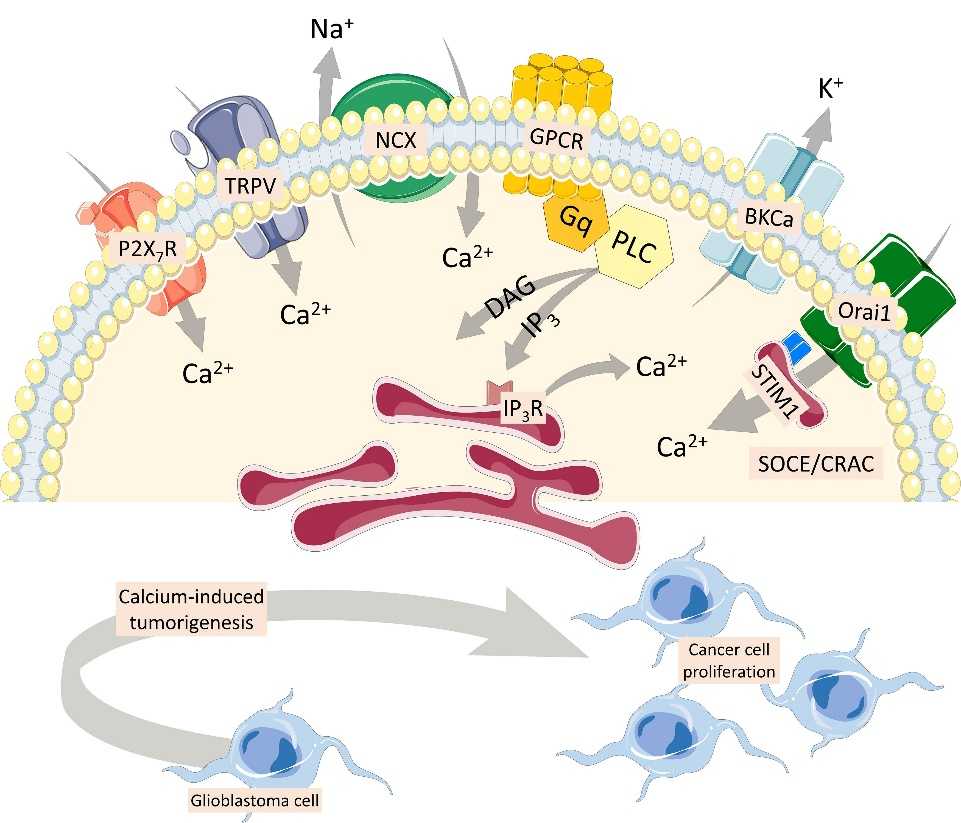Calcium ions, as the first messenger in signal transduction pathways, are essential for synaptic neurons and glia throughout the central nervous system. In biological organisms, calcium ions generate a wide variety of intracellular signals that are present in almost every type of cell and are essential in many functions, such as the control of cardiomyocyte contraction and the regulation of the entire cell cycle from proliferation to cell death. Calcium ions are a kind of important intracellular signaling molecule in neurons. The activity of neurons is closely related to their internal calcium ion concentration. When neurons are firing, a short-term calcium ion concentration peak will burst. Besides, in the central nervous system, many of the intracellular responses that elevate calcium levels are mediated by calmodulin kinases (CaMKs). The activity of calmodulin kinase is regulated by the phosphorylation of calmodulin after binding to Ca2+. Therefore, calcium ions play multiple roles in regulating neurotransmitter release.

Traditional calcium imaging techniques are limited by the microscope's field of view, can only record from a small area, and cannot provide detailed observations of neural activity in the entire brain. With advances in neuroscience, calcium imaging is becoming a widely used method for detecting calcium ion concentration, which refers to the technique of monitoring calcium ion concentration in tissue by using a calcium ion indicator. There are two types of calcium ion indicators widely used now: chemical indicators and genetically-encoded indicators. But both of these two indicators can hot be demonstrated to distinguish between individual neurons.
Researchers recently developed a new biomarker for detecting Calcium-related activity; this new biomarker is based on the fluorescent protein-aequorins and through bioluminescence resonant energy transfer technology. Compared with traditional detection methods, this new biomarker shows advantages in multiple aspects. First, the biomarker is not toxic to cells, thus making it possible to detect it in vivo. Second, the biomarker can detect the calcium ion concentration in individual cells, which is more intuitive for data analysis. Finally, this biomarker can detect calcium ion activity in a variety of tissues and has a wide range of applications. Researchers have made preliminary attempts at this technology and obtained good results. Therefore, this biomarker has excellent potential in detecting calcium ion activity.
Profacgen is a company dedicated to research in the biological field. We have been committed to discovering advanced experimental techniques to provide stronger support for our customers' research. Please do not hesitate to contact us for more details if you are interested in this new method, and we will provide a considerate service for you. At the same time, we also provide other protein interaction detection methods, please move to our website for more details in protein-protein interaction.
Reference
Fill out this form and one of our experts will respond to you within one business day.